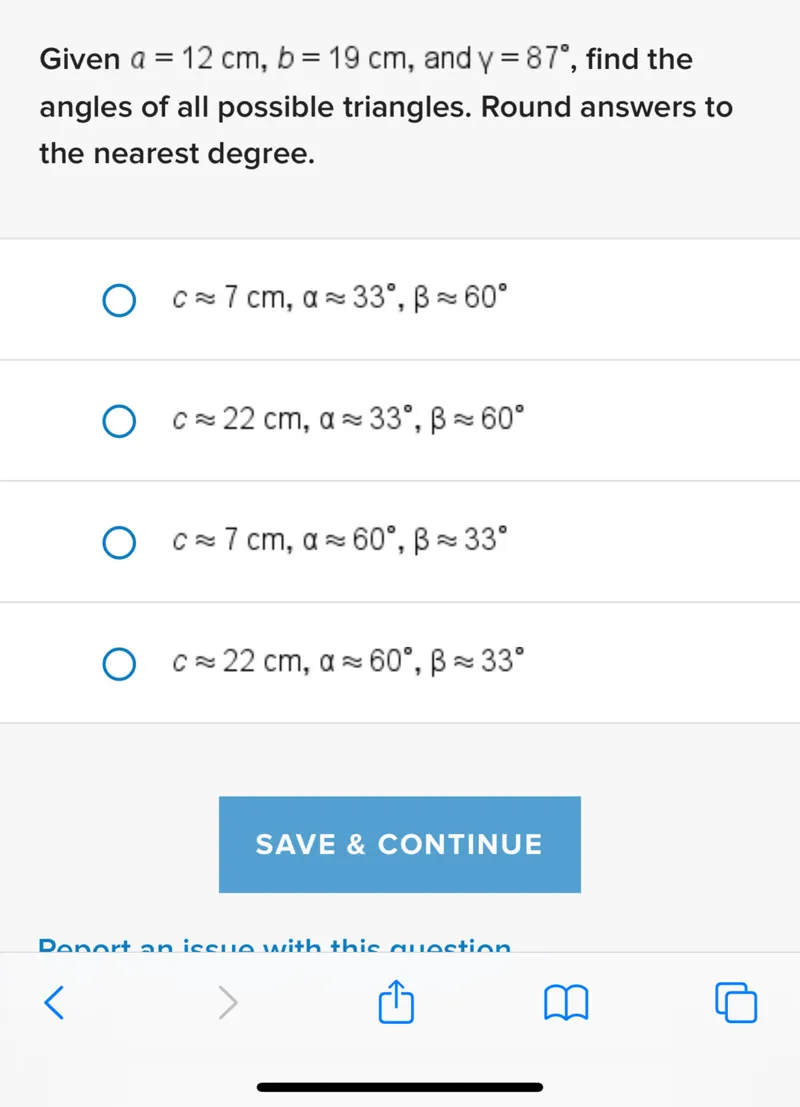Questions: Given a=12 cm, b=19 cm, and γ=87°, find the angles of all possible triangles. Round answers to the nearest degree. c ≈ 7 cm, α ≈ 33°, β ≈ 60° c ≈ 22 cm, α ≈ 33°, β ≈ 60° c ≈ 7 cm, α ≈ 60°, β ≈ 33° c ≈ 22 cm, α ≈ 60°, β ≈ 33°

Transcript text: Given $a=12 \mathrm{~cm}, b=19 \mathrm{~cm}$, and $\gamma=87^{\circ}$, find the angles of all possible triangles. Round answers to the nearest degree.
$c \approx 7 \mathrm{~cm}, \alpha \approx 33^{\circ}, \beta \approx 60^{\circ}$
$c \approx 22 \mathrm{~cm}, \alpha \approx 33^{\circ}, \beta \approx 60^{\circ}$
$c \approx 7 \mathrm{~cm}, \alpha \approx 60^{\circ}, \beta \approx 33^{\circ}$
$c \approx 22 \mathrm{~cm}, \alpha \approx 60^{\circ}, \beta \approx 33^{\circ}$
SAVE \& CONTINUE





